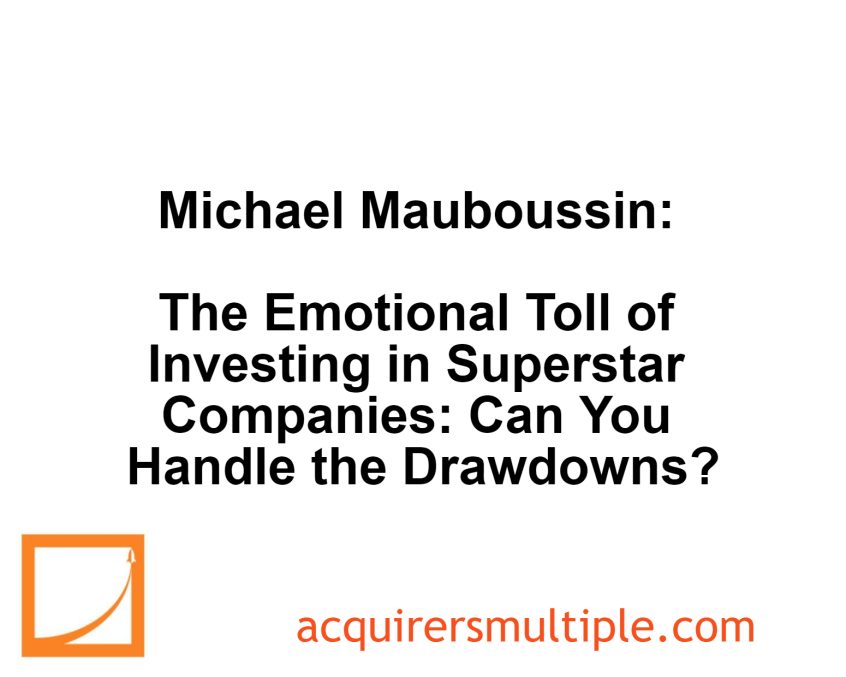During his recent interview on the Money Maze Podcast, Michael Mauboussin discussed the qualities of superstar companies and the challenges of finding them. He noted that many of these companies have undergone substantial drawdowns at some point, and how it can be very difficult for investors to stay the course with these companies during these periods. Here’s an excerpt from the interview:
Mauboussin: I think more to your point, and Bessembinder did this I think through the great work of our friends and competitors but our friends at Baillie Gifford who helped fund some of this research that Bessembinder did.
You can look at the qualities of these companies that have been these superstar companies, and very much to your point I think there are two or three things that were interesting.
The first is not surprisingly, their fundamentals are quite good. They grow well in terms of earnings. They generate cash. All the things that… they invest prudently. It’s all the things you would expect to see in quality growth that they very much check those boxes.
Now again the challenge is to find these things exante.
The second thing that he pointed out which I think is not always intuitive is that whereas if you think about the leaderboard of the wealth creators of all time in the United States.
The leading companies include Apple and Microsoft and Alphabet and Amazon so you sort of hear technology. When Bessembinder got into the numbers he found that technology was in fact not over represented.
In fact there are a lot of technology companies that do quite poorly and other sectors actually had portionally more representation including healthcare and interestingly energy.
The last thing he pointed out, and Simon I think this is really interesting not for quality growth investors but just investors broadly speaking, he found that almost every one of these superstar firms at some point had undergone a very very substantial drawdown.
For example we just looked at for fun the last 15 years all the companies that generate total shareholder returns in excess of 1,000%. We then examined the average and median size of the drawdown, and the duration, and the answer is it’s 60% drawdowns.
And many of the leading companies had drawdowns 75/80/85%.
And so it’s one thing to identify one of these great companies but it’s a very different thing to be able to stay the course with that company as it went through these drawdowns. And Apple’s famous for this.
We mentioned Amazon before. Amazon had multiple drawdowns of more than 80%. And so if you had bought it on the IPO and held it to today you’d be quite happy of course but you would have suffered through some very very challenging periods in the interim.
That’s the other thing that becomes very interesting from the point of view of just first of all emotionally and behaviorally but also from the point of view of running a fund that is owned by investors.
Because the investors going to see these drawdowns and think you’ve lost your mind even if those companies go on to create enormous value over the time.
You can listen to the entire discussion here:
For all the latest news and podcasts, join our free newsletter here.
Don’t forget to check out our FREE Large Cap 1000 – Stock Screener, here at The Acquirer’s Multiple:



